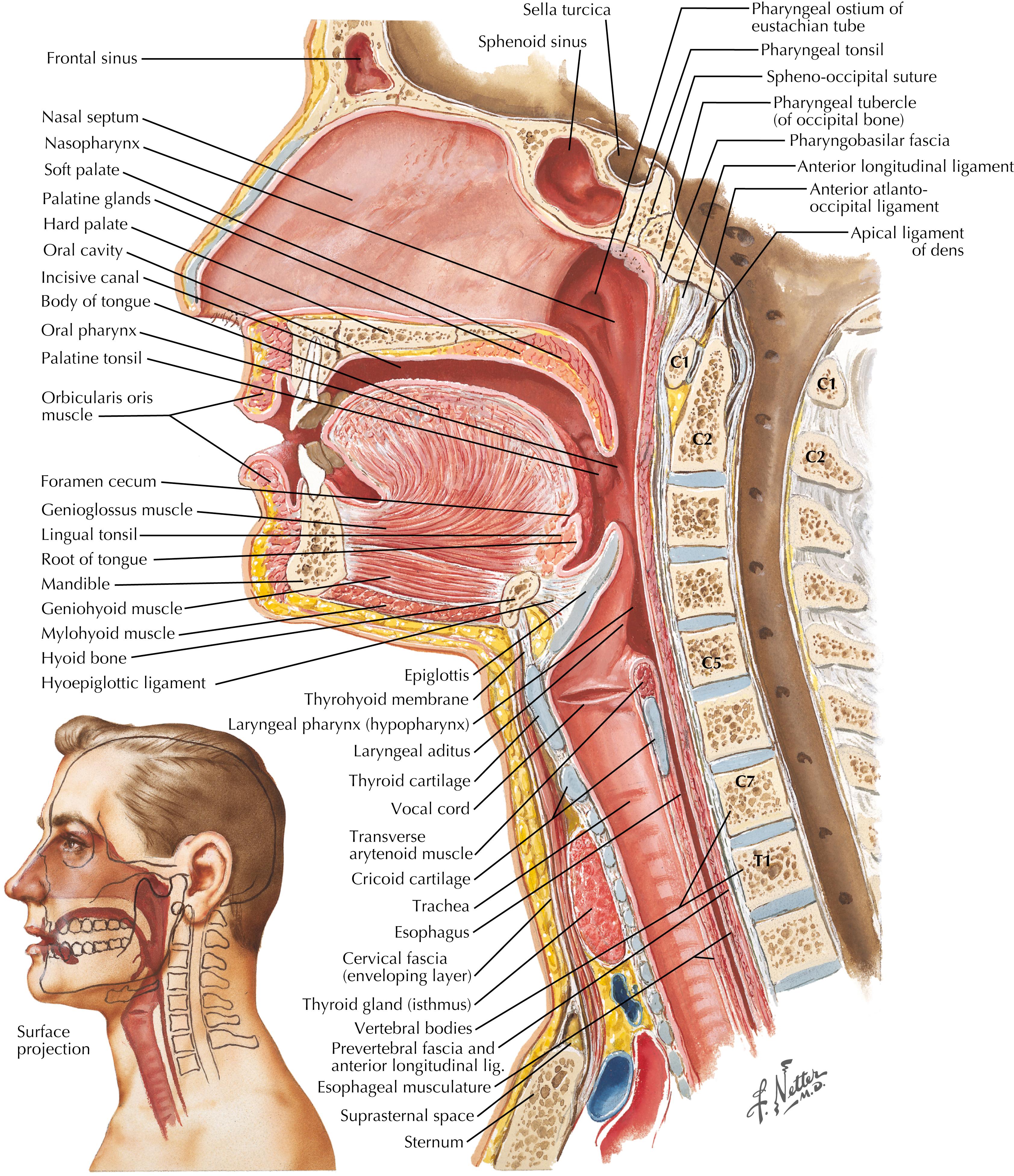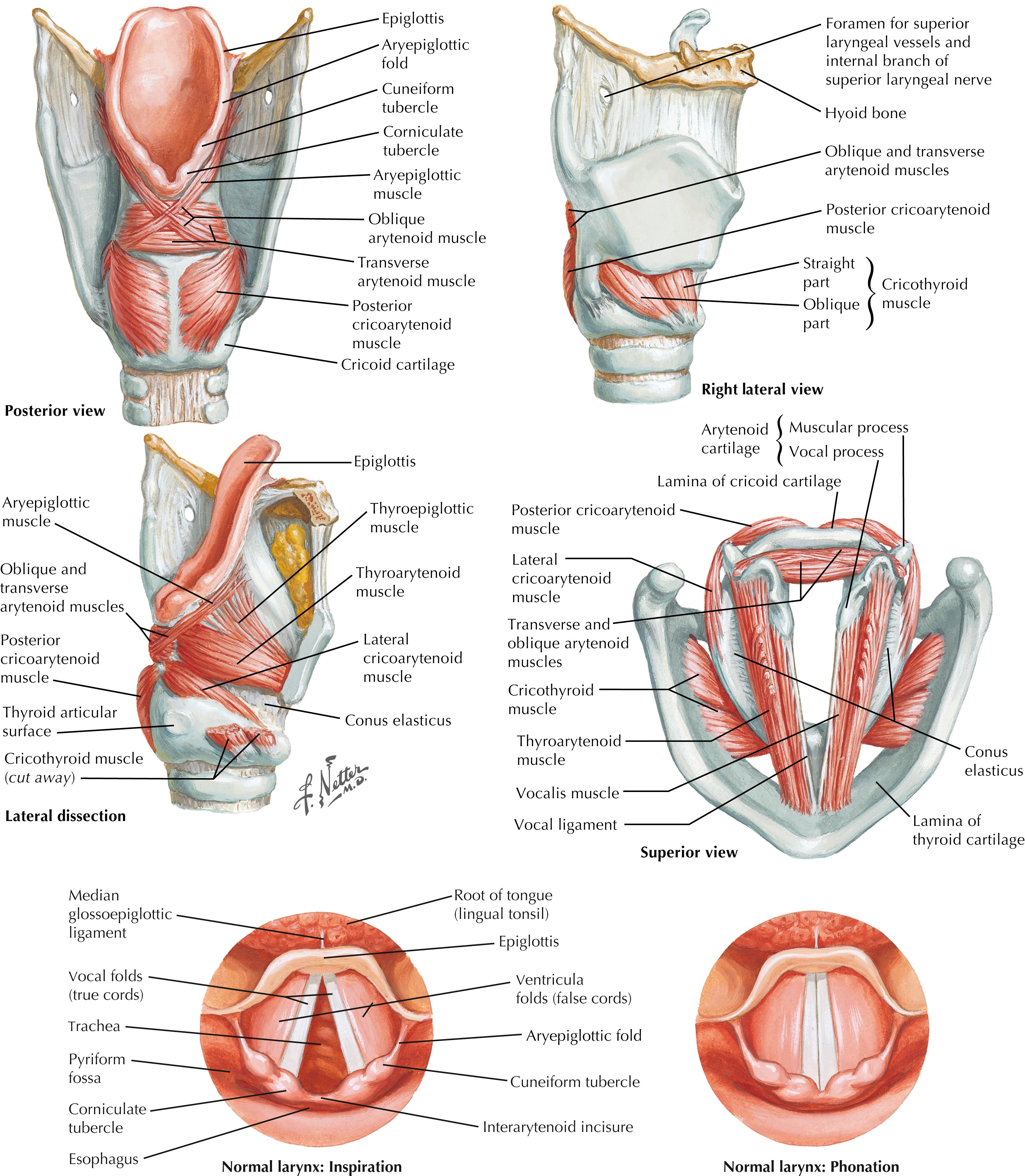Physical Address
304 North Cardinal St.
Dorchester Center, MA 02124
The well-trained airway expert has a key understanding of the anatomy and challenges that may cause possible complications during airway placement. There are several essential steps when considering an airway placement. The provider must understand the indications for intubation and have a standardized method of assessing the patient’s anatomy. With more complex airway placement encounters, the provider should be familiar with numerous difficult airway adjuncts and be familiar with the anatomy, innervation, and pitfalls of various equipment choices. Even under those extreme conditions of a challenging airway, familiarity with basic anatomy serves as a cornerstone for definitive airway placement.
The pulmonary system consists of the lungs and a series of airways that are subdivided into upper and lower segments.
The airway passage is divided into three anatomic areas of the pharyngeal cavity. The nasopharynx is defined by superiorly and anteriorly by the nasal septum and inferiorly by the soft palate; it communicates with the oropharynx via the pharyngeal isthmus. The oropharynx borders extend inferiorly from the soft palate to the superior margin of the epiglottis. The most inferior cavity, the laryngopharynx, is bounded by the landmarks of the epiglottis superiorly and the lower border of the cricoid cartilage inferiorly ( Fig. 49.1 ). Inspiratory patency of the pharynx is maintained primarily by contraction of the tensor palatine, genioglossus, and hyoid bone muscles. Loss of muscle tone, as occurs during general anesthesia and sedation, leads to pharyngeal collapse because of a decrease in the anteroposterior diameter of the pharynx at the level of the soft palate and epiglottis.

The larynx serves as the connecting structure between the upper and lower airways. The adult larynx extends from the fourth to the sixth cervical vertebra, and it is composed of nine cartilages, with six paired and three single components. The three single cartilages include the thyroid, cricoid, and epiglottic. The paired cartilages include the arytenoid, corniculate, and cuneiform. The vocal folds extend in an anterior-posterior plane from the thyroid cartilage to the arytenoid cartilages, and the former acts as a protective housing anteriorly for the vocal mechanism ( Fig. 49.2 ). Laryngeal movement is controlled by two muscle groups: the extrinsic muscles, which move the larynx as a whole, and the intrinsic muscles, which move the various cartilages. The larynx is innervated by two branches of the vagus nerve on each side, the superior laryngeal and recurrent laryngeal nerves. The recurrent laryngeal nerve innervates all intrinsic laryngeal muscles except for the cricothyroid muscle, and injury can lead to vocal cord dysfunction. Airway patency is typically preserved in unilateral nerve injury; however, this isolated defect may still impair the ability of the larynx to protect against aspiration. The superior laryngeal nerve also supplies sensory innervation to the airway extending from the epiglottis to above the vocal folds and is an important target for anesthetizing the airway for awake intubation.

Become a Clinical Tree membership for Full access and enjoy Unlimited articles
If you are a member. Log in here